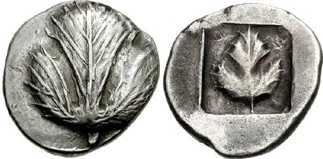- Read offline
- Access all content
- Build a list of your own favourites
- Search the contents with full-text search functionality
- ... and more!
sélino
σέλινο
Celery, which in Greece can mean wild celery (which looks more like parsley) or western cultivated celery. The wild kind enjoys a starring role in the classic χοιρινό με σέλινο (chirinó me sélino) stewed pork and celery dish.
Wild celery is thin and fibrous, with edible leaves (in English it's called smallage, marsh parsley or leaf celery). It's still sold in Greek markets, and was, and still is sometimes, often confused with parsley (maitanós) in Greece.
In ancient Greece, it was used in funerals to the extent that it was rarely eaten as a food, although some used it as an aphrodisiac. In mythology, it was associated with the underworld, having been created from the blood of Kadmilos, the father of the Cabeiri, the gods of the Underworld who had an important sanctuary on Samothráki.
Homer mentions celery growing around Troy, and victors at the Nemean Games, one of the four great Panhellenic Games of ancient Greece, were crowned with garlands of wild celery, as were the dead. In ancient Greece, deisthai selinon, 'to need celery,' meant someone would soon be pushing up daisies.

Selino also gave its name to one of the largest Greek colonies in Sicily, Selinunte, which put celery leaves on its coins.
Images by agrotiko, ancient coins, Creative Commons License

